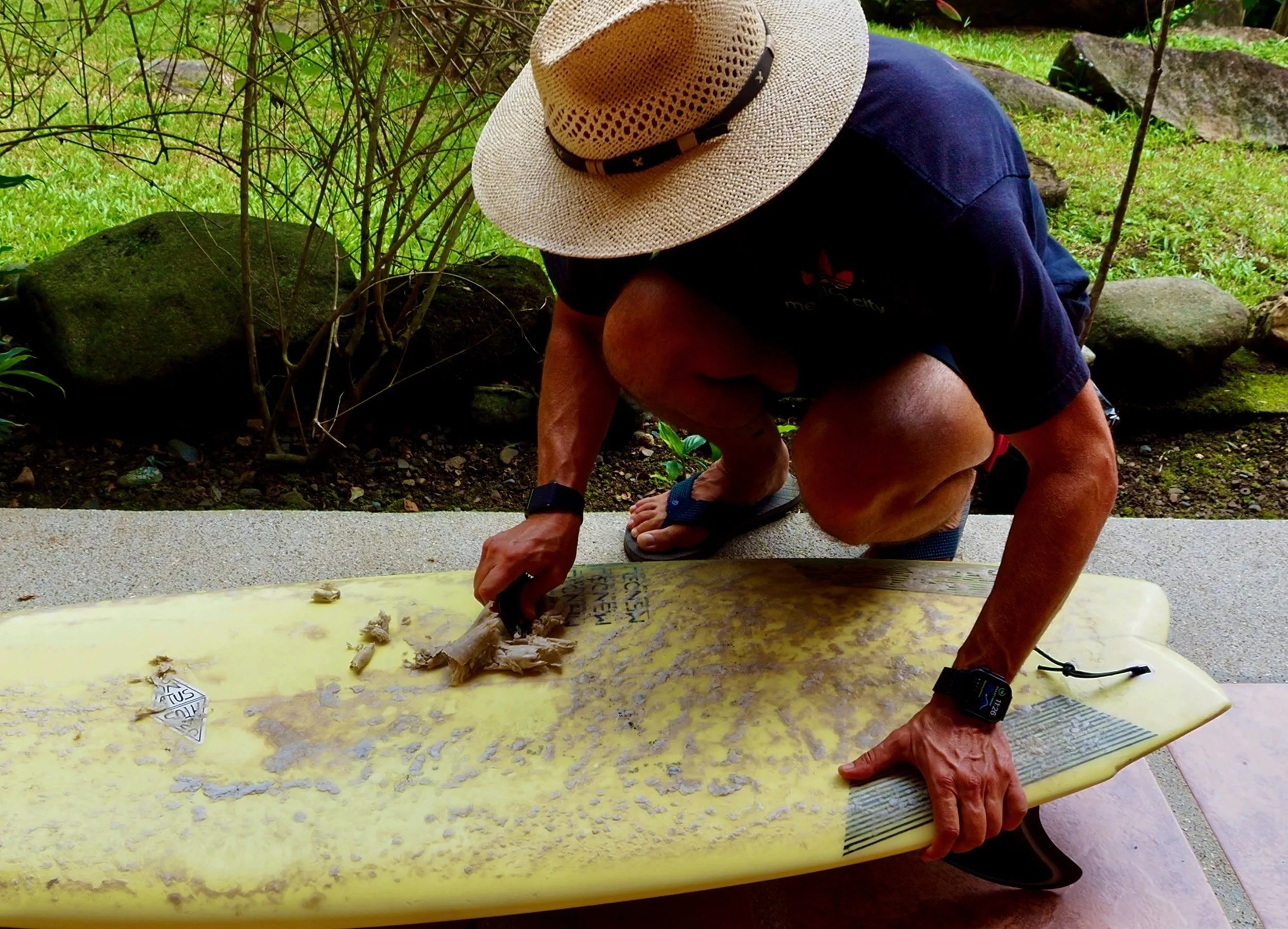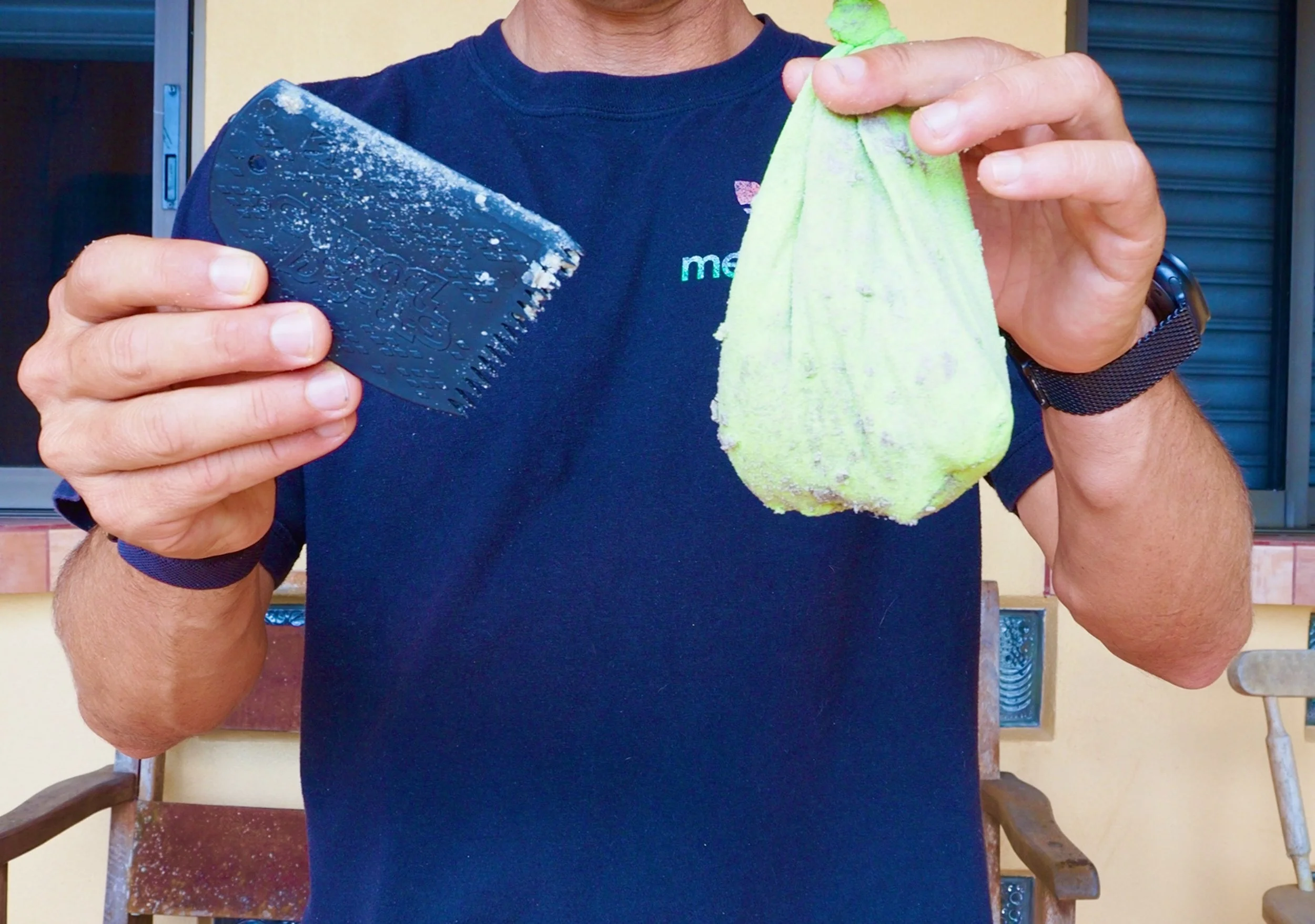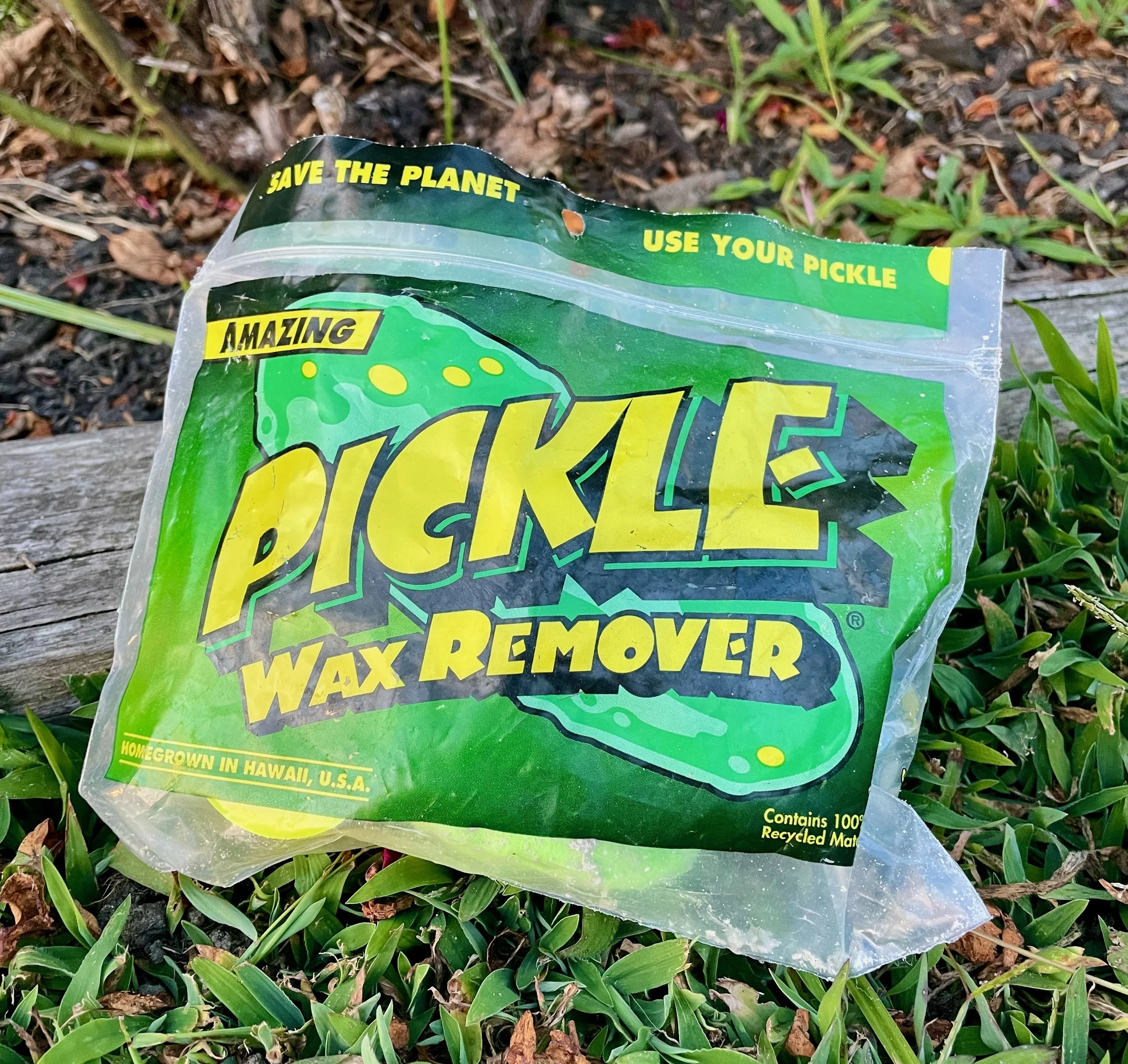Wax builds up over time—what started as grip becomes grime. Slippery sessions often come from wax that's too old, too dirty, or wrong for the water temperature. You can't fix dings or prep for travel without a clean deck. Removing wax reveals hidden issues and improves performance.
When to remove surfboard wax:
At least once a year for regularly used boards, even if they stay at the same location. Wax accumulates dirt, sand, and grime that affects performance.
When traveling to warmer water. Don't remove wax from surfboard before your trip. Wait until you're in the warmer environment where the sun can do the work.
When buying a used board. Remove old wax to see what you're working with and start fresh.
Before ding repair. Clean completely first, unless the repair shop offers cleaning as part of their service.
Equipment You'll Need to Clean Your Surfboard
Wax comb + pickle. That’s it.
Most guides incorrectly tell you to use credit cards or ice scrapers. Don't use credit cards, ice scrapers, box cutters, or razors. Avoid metal tools entirely—they can ding your surfboard.
For both rough-and-ready and proper methods: A wax comb made specifically for surfboards. Available on Amazon or at your local surf shop. This is an essential surfer tool. You should have multiple combs in your car and surf bag.
For the proper method: Wax comb + Pickle Wax Remover (nylon sock with foam dust) that comes with its own wax comb. You can make your own with a nylon sock and fine pumice. Sticky Bumps liquid remover and flour work but are messier.
The Pickle is a miracle. You can make your own if you’re feeling thrifty, but why not just support your local surf shop instead?
The distinction is important: rough and ready requires only a wax comb. Proper removal requires both a wax comb and a pickle.
Step-by-Step: How to Remove Wax from Your Surfboard
Two methods depending on your situation:
Rough and Ready: You have a wax comb but no pickle, and need to quickly change wax temperature. Only recommended for when you’re in a pinch and need to get in the water asap.
Proper Method: You're prepared with all tools for complete removal. Recommended generally, but especially for your yearly re-do, taking the board to ding repair, and cleaning up a new-to-you second hand stick.
Rough and Ready Method
Step 1: Place your board on a soft surface (towel, grass—not concrete or pebbles). Let direct sunlight soften the wax. Clear boards on moderate days take longer than colored boards on hot days. Test softness with the scraper end of your wax comb—wax should be soft but not dripping.
Step 2: Remove as much wax as possible using the scraper part of the wax comb (the long flat end). The comb part is for roughing up existing wax when you need texture but don't have fresh wax. The curved part doesn't work for removal—use only the flattest scraper end.
Step 3: Collect shavings into a ball as you work—don't let them spread everywhere or get under your board. Work quickly to prevent mess. This method assumes you're removing cold water wax to apply warm water wax.
Step 4: Throw the dirty wax ball in trash and clean up any leftover dust or shavings in the area you did your removal in.
Proper Method
Step 1: Same setup: soft surface, direct sunlight, appropriate timing for board color and heat.
Step 2: Remove maximum wax using the scraper part of the wax comb. Dispose of wax ball properly (or research wax recycling options).
Step 3: Apply the pickle like reverse waxing. Work the foam dust thoroughly—you'll see film coming off in places you didn't expect. Use on the entire board, including nose, tail, and bottom (especially if you use board socks). The board will look shiny and reveal pressure dings previously hidden.
Step 4: Remove any remaining pickle dust with a towel, paper towel, or Windex for pristine results.
Step 5: Same as step 4 in rough and ready.
How Often Should You Remove Surf Wax?
Minimum once yearly. More frequently if wax gets dirty or slippery, depending on your aesthetic preferences and maintenance standards.
Critical temperature rule: When returning from tropical surf trips to cold water, you don't need to remove wax from surfboard. Put cold water wax directly over the tropical base layer.
However, you cannot put tropical wax over cold wax—it will rip off and smear.
Remove wax if it melted in your car and rehardened into a goopy mess dripping over the rails.
Common Mistakes to Avoid
Insufficient initial removal. If you don't remove enough wax with the scraper part of the wax comb, the pickle step becomes much harder.
Overheating. Don't let wax drip like a candle—creates unnecessary mess.
Poor cleanup. Clean up shavings as you work. Don't leave melted wax on someone else's property.
Wrong tools. Using active credit cards ruins them. Sharp tools can cut your board.
How to Remove Wax from a Soft-Top Surfboard (Foamie)
None of this applies to soft tops. If you wax your soft top, you commit to never removing that wax. Wax sinks into the porous foam surface and doesn't come off. You can try hot water and paper towels, but the wax has penetrated the material. This is why many surfers avoid waxing soft tops entirely. The methods described in this guide apply to polyurethane and epoxy surfboards sealed in fiberglass or epoxy resin, not foam boards.
Conclusion
Wax maintenance connects you to your board and reflects your surfing hygiene. How thoroughly you remove wax—whether you do a pristine job for optimal rewaxing—relates to your aesthetic preferences and attention to detail. Old, dirty wax still functions but looks disgusting. The choice is personal preference.
Clean up after yourself. Leaving wax debris on someone's property reflects poorly on your character, not your surfing ability.
This is an essential travel skill. Water temperature differences drive most wax removal decisions beyond basic yearly maintenance.
Ready to build the perfect wax job on your clean deck? Learn how to wax your surfboard properly for optimal traction and performance.




